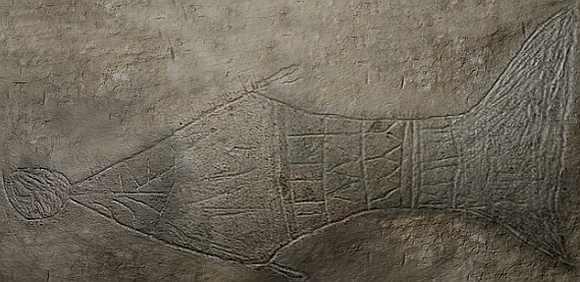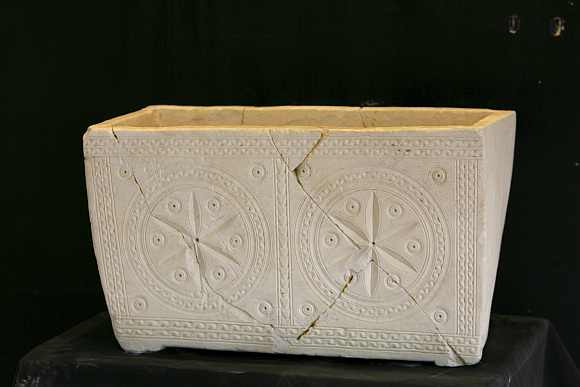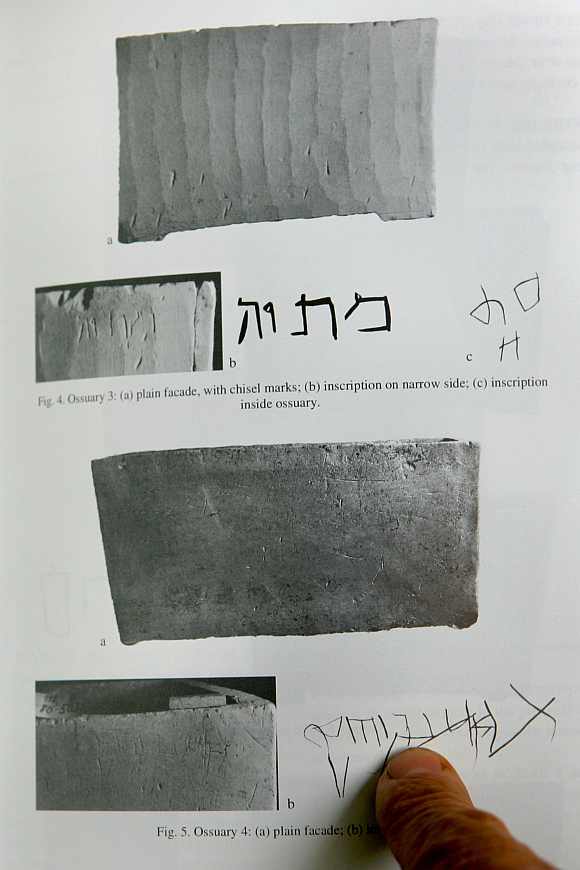The 'Jesus Tomb' debate has gone a step further with archaeologist working in Jerusalem finding human bone boxes and inscription on an ancient coffin lid that says 'Divine Jehovah, raise up'.
Using a robotic arm equipped with a camera, archaeologists unearthed human bone boxes and the inscription in a 1st Century Christian burial chamber beneath a tower block in Jerusalem.
They believe that this is the proof of the site being the final resting place of Jesus. However, other scholars remain extremely sceptical of the find.
...
DISCOVERED: Tomb where Jesus may have been buried
Image: An ossuary found during an excavation in Jerusalem 27 years ago is displayed in the Israeli city of Beit ShemeshPhotographs: Reuters
The inscription is on a limestone box known as an ossuarie -- with another such box carrying a drawing of a fish with a stick figure in its mouth, which is believed to refer to the story of Jonah and the Whale -- one of the very first biblical stories, the Daily Mail reported.
The find is 200ft away from a previous discovery known as the Jesus Family Tomb, which led to a huge amount of controversy after it was uncovered in the 1980s.
Archaeologists then claimed it constituted ossuaries inscribed with names associated with Jesus's family.
DISCOVERED: Tomb where Jesus may have been buried
Image: Veteran investigator Simcha Jacobovici holds one of the two nails presented in his new documentary film as having a connection to Jesus at Tel Aviv University on April 6. The filmPhotographs: Reuters
That discovery triggered amazing theories including one that maintained Jesus had been buried there alongside Mary Magdalene who he had married and raised a family with. However, many leading theologians and archaeologists rejected such claims as being completely unfounded.
The Jesus Family Tomb was only assessed briefly before protests by Orthodox Jews, concerned about the disturbance of a gravesite, ended the excavation. It was then sealed up, and a tower block built over it.
However James Tabor, a scriptural scholar at the University of North Carolina at Charlotte and documentary filmmaker Simcha Jacobovici were firm on continuing the research.
The pair was granted permission from the Israeli government in 2010 to use the robotic arm to drill holes allowing them to explore the surrounding area.
This led to the discovery of a separate chamber, which they dubbed as 'Patio Tomb', as it sits almost directly below the patio of the building. It was inside the Patio Tomb that they unearthed the inscriptions.
DISCOVERED: Tomb where Jesus may have been buried
Image: Israeli archaeologist Professor Amos Kloner points to the inscription Yeshua son of Yehosef (Jesus son of Joseph) on an ossuaryPhotographs: Getty Images
The pair has asserted that the inscriptions discovered inside the Patio Tomb considerably increase the likelihood that the 'Jesus Family Tomb' is indeed, the resting place of Jesus. They believe that both tombs are part of the same complex, which may have been the property of Joseph of Arimathea, who, according to the gospels, buried Jesus.
One of the limestone ossuaries features a Greek inscription calling on God to 'rise up' or 'raise up' someone.
Another shows the image of a fish with a stick figure in its mouth that Tabor has suggested could represent the prophet Jonah. "This inscription has something to do with resurrection of the dead, either of the deceased in the ossuary, or perhaps, given the Jonah image nearby, an expression of faith in Jesus' resurrection," Tabor said.
In the earliest gospel materials the 'sign of Jonah,' as mentioned by Jesus, has been understood as a symbol of his resurrection.
Jonah images in later 'early' Christian art, like the images found in the Roman catacombs, are the most common motif found on tombs as a symbol of Christian resurrection hope.
On the contrary, the story of Jonah is not depicted in any first century Jewish art and iconographic images on ossuaries are extremely rare, given the prohibition within Judaism of making images of people or animals.
DISCOVERED: Tomb where Jesus may have been buried
Image: A burial cave on the edge of Jerusalem's Old City where Israeli archaeologists have said that they unearthed shroud remains from the Jesus-eraPhotographs: Reuters
The tomb in question is dated prior to 70 CE, when ossuary use in Jerusalem ceased because of the Roman destruction of the city. If the markings are Christian, the engravings symbolise the earliest archaeological record of Christians ever found.
So the engravings were most probably made by some of Jesus' earliest followers, within decades of his death, predating the writing of the gospels. "If anyone had claimed to find either a statement about resurrection or a Jonah image in a Jewish tomb of this period I would have said impossible -- until now," Tabor said.
"Our team was in a kind of ecstatic disbelief, but the evidence was clearly before our eyes, causing us to revise our prior assumptions," Tabor added.
A documentary on the discovery will be broadcast by the Discovery Channel in spring 2012.






article